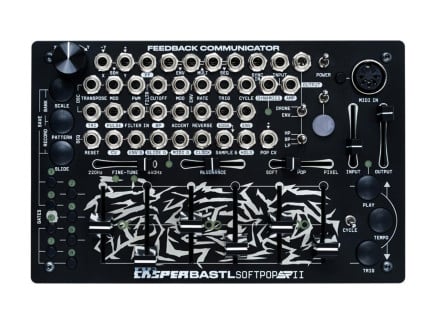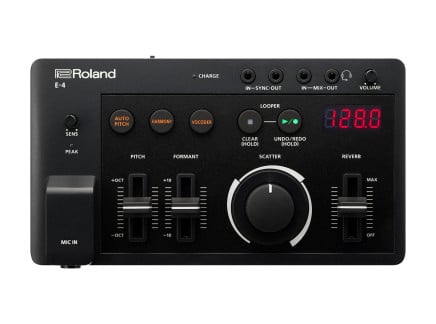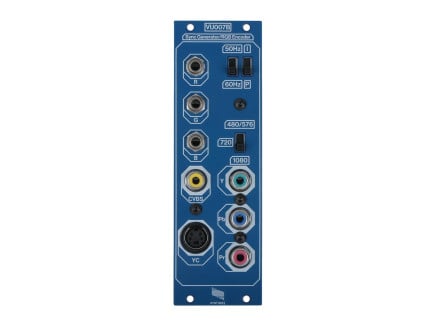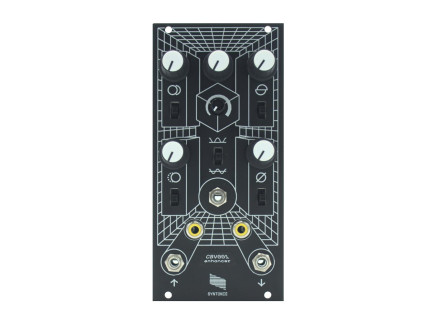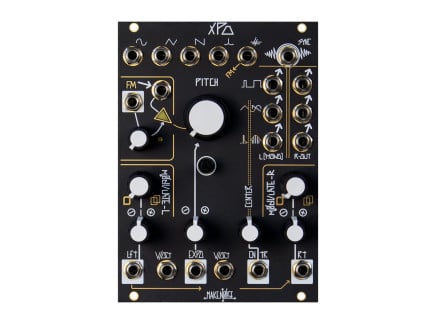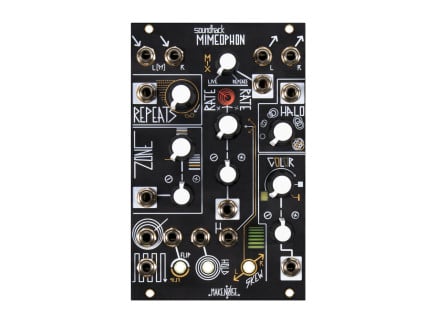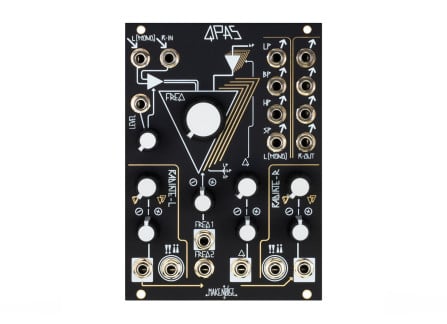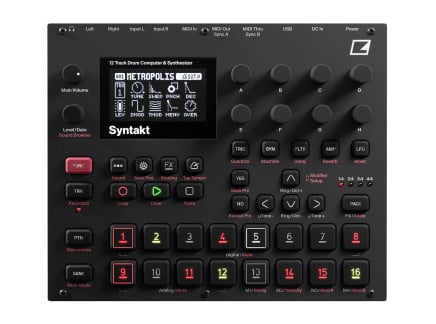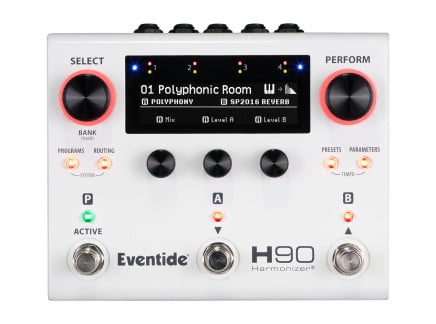The year is starting to draw to a close—and as such, we're looking back at our favorite gear of the year. 2022 was full of all kinds of rad new music equipment, from modular synths to effect pedals, drum machines, keyboard synthesizers, and more...so, there's a lot to choose from!
In a recent article, we asked a bunch of our friends and favorite artists what their favorite gear was this year...but today, we're looking inward. We checked in with the folks on Perfect Circuit's own media team to ask the big question...what was our favorite gear this year?
So! Check out the video above, and read on to hear from your friendly neighborhood synth nerds and patch pals alike...and to learn once and for all: what was the best electronic music gear of 2022? Let's dive in!
Wes's Pick: Bastl Softpop 2 Semi-Modular Synthesizer
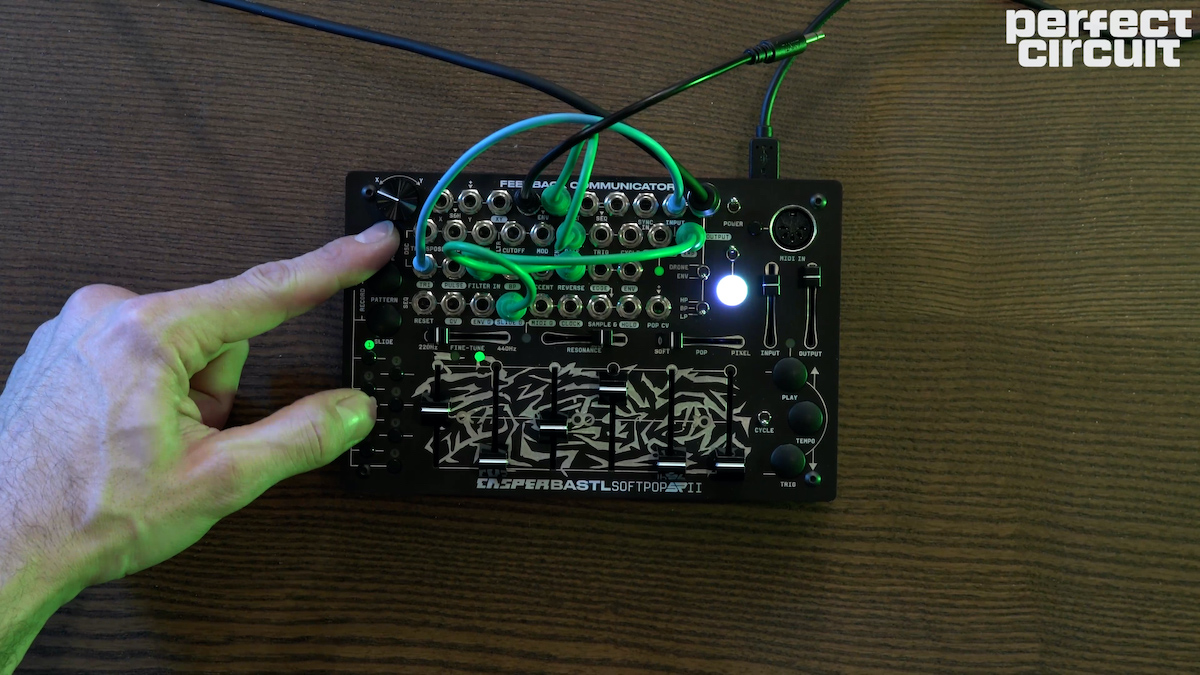
The Softpop 2 is the latest collaboration between Casper Electronic and Bastl Instruments. The original Softpop was announced in 2017, and at the time, there wasn't much else like it: it was a weird, pocket-sized, portable, patchable instrument that was all about eccentric blips, bleeps, squeals, squishes, and outright bizarre sonic textures. Borrowing significant inspiration from esoteric instruments like the Benjolin and Blippoo Box, the Softpop seemed to be a love letter from Casper Electronics designer Pete Edwards to experimental instrument maker Rob Hordijk...bringing similar chaotic sounds and interactions to more people than ever before.
While the new Softpop 2 certainly retains these influences, it brings a host of others along with it—in fact, we've begun to think of Softpop 2 as if you took a Blippoo Box, a TB-303, and a Eurorack system and threw them all into a blender. Where the original Softpop was a weird, quirky little box of strange sounds, Softpop 2 is a full-fledged semi-modular synthesizer with a ton of unique character...equally ready to take on acid bass lines, crazy arpeggiated sequences, heavy drones, and outrageous noise outbursts.
So, what makes it different from the original? Well, one of the most obvious things is that its form factor received a significant upgrade: no longer simply a little pocket-sized buddy, the SPII now has a much more robust housing, complete with a full-fledged 3.5mm, Eurorack-compatible patch bay and even MIDI connectivity. This makes it easy to integrate with a larger setup, be it centered around modular synth gear, standalone drum machines/groove boxes, you name it! SPII also includes a load of features not found in the original, from the built-in step sequencer, new digital oscillator waveform options, pitch quantization, extended parameter sequencing potential, and much more.
If you're looking to dive into modular synthesis by getting a semi-modular synth, Softpop is one of our top recommendations. And of course, if you're just looking to add a touch of acid, out-there sound design, or just plain fun to your setup, it's truly hard to beat.
Brian's Pick: Roland Aira E-4 Voice Tweaker
Roland introduced a portable line-up of instruments this year with their AIRA Compact series of music production tools. While all three offer something very helpful, the E-4 Voice Tweaker is a device that stands out as something unique and useful for a variety of applications. As advertised, the E-4 excels at giving you pitch-perfect vocal lines with its built-in autotune function, which allows you adjust the key and scale to either major or minor. With the Harmony setting, you can add diatonically correct intervals to your voice, and the Vocoder setting infuses your voice with a selectable oscillator. Aside from that, a built-in looper, effects section, and unique Scatter knob makes this a wonderful vocal toolkit.
However, it can also be a great experimental sound design toolkit, as it can take any type of input through the 1/4" jack. The audio engine works monophonically, which can be exploited for strange glitchy effects or utilized to add harmony to a monophonic voice. The true hero of the E-4 is the looper, with its generous 24-second loop length and its position in the signal chain: before the Scatter and built-in Effects section. The Scatter effect is also a wonderfully simple, performable knob that fades between three assignable effects that are rhythmically tied to the tempo and move the sound around the stereo field.
In the video, we briefly look at how the E-4 can be used in a looping, ethereal vocal performance using the Autotune feature, different settings in the Harmony section, as well as introducing the Vocoder to the mix. Combining the E-4 with the Strymon Timeline's looper, you can juggle between the two different loops letting you—as we explored—start to loop objects and not vocals. This is a very effective use of the E-4, as it has a separate input gain knob, so even the tiniest of sounds can be amplified and the glitchy artifacts provided by the various algorithms can be very interesting.
This sleeper of a tool is essential for your setup regardless if you're a vocalist or not: gip a Roland E-4 to open new realms of performance.
Erin's Pick: Syntonie Eurorack Video Synthesis Modules
Modular video synthesis is very similar to audio synthesis: you use oscillators and ramp generators combined with modulators to create art. The difference, of course, is that one creates sound and the other creates visuals. Another crucial difference is that you can simply plug in the audio synth output into just about any input and get sound. You cannot do that with a video synth rack, and it requires an RGB encoder that converts the voltages into video signals that a TV can understand.

This is where Syntonie comes in to save the day: for years there were very few options when it came to this type of conversion to the point where you simply could not acquire such a piece of equipment. Over the Summer, the VU007B module started to ship and it offered a much needed solution in a very affordable package. What it does is simple: takes three channels of LZX 1V RGB standard voltages and encodes it to work with composite, component, or S-Video connections. While utilities are often the unsung heroes of the creative world, this module is the most important piece of equipment in your video synth case. Without it there is no way to see what you're doing.
Their companion RGB decoder, the VU003B, does the opposite by taking standard video signal and converts it into LZX 1V RGB standard. This lets you bring in outside video as Erin shows us by patching in her vintage Roland P-10 video sampler into the VU003B, processing it and then going back out the VU007B into the CRT. Once you have the Syntonie VU007B you can finally start your video synth journey—and when combined with the VU003B, along with some choice video processing modules, you can create elaborate feedback patches and integrate your other videos into your modular for further processing.
Ryan's Pick: Make Noise XPO Stereo Prismatic Oscillator
Easily one of the most interesting Eurorack modules released this year, Make Noise's XPO is just plain wild.
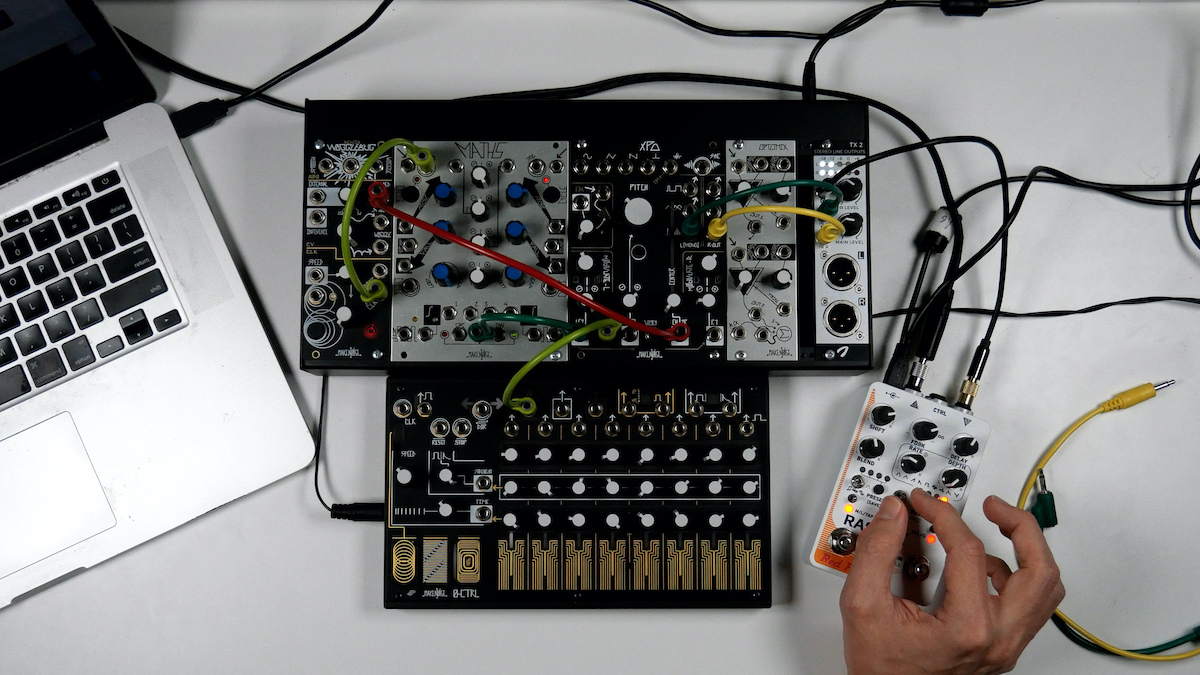
At its core, XPO is a great-sounding analog oscillator with all the features you could hope for: loads of individual waveform outs (including spike and suboscillator shapes!), a linear FM input with voltage-controllable FM depth, an exponential FM input, a sync input, and two 1V/octave inputs. All of that alone would make for an excellent sonic tool—the raw waveform sounds range from warm and clean to big and buzzy, and the FM and sync can get absolutely wild. But that's not even half of what makes XPO so interesting.
XPO is a stereo oscillator—but it achieves its stereo nature in a quite uncommon way. Rather than simply panning the sound of a simple waveform between two outputs, it instead provides three pairs of continuously variable waveshaper outputs, each meant to be used in stereo. Three variable controls on the panel (Modulate L, Modulate R, and Center) affect the tone color of each of these shapers, with the Modulate L and R panel controls and CV inputs affecting the left and right sets of waveshaped outputs, respectively.
The top pair of waveshaped outputs provide stereo pulse width modulation, with the Left and Right Modulate controls affecting the duty cycle of the left and right outputs, respectively. The second pair of waveshaper outputs, the Vari-Timbre outs, allow you to use the Modulate and Center controls to achieve a number of shapes derived from typical sine/saw/triangle shapes...in some ways reminiscent of the Buchla 158/258, but much buzzier and much more peculiar. Finally, the stereo Wavefolded outputs provide DPO-like wavefolding, with the Modulate controls providing everything from complete silence to absolutely insane, nasal folded tones and the Center control providing a buzzy, fizzy bite to your sounds.
Of course, XPO pairs well with Make Noise's other stereo-oriented modules, such as the QPAS filter, X-PAN mixer, or Mimeophon stereo delay/time lag accumulation processor...but honestly, when it sounds so good on its own, you might not need anything else at all. Simply grab a pair of headphones, turn some knobs, and dial in to stereo sonic bliss.
Bryce's Pick: Elektron Syntakt Drum Machine
If there were one new drum machine to rule them all in 2022, it would certainly be Elektron's Syntakt, which happens to Bryce's staff pick for the year. Syntakt is the drum synthesis-oriented addition to Elektron's Digi series of potent square boxes, packing eight digital tracks and four analog tracks for a total of one dozen punchy, powerful percussive bits. Percussion is only a suggestion though, as all tracks offer a number of different algorithms called Machines that range from kick and snare drums to melodic voices, chord generators, and more.
Syntakt brings a number of new tricks to the Elektron product catalog. For the performers out there, Modifiers are a way to impart retrigs, velocity manipulations, or other assignable changes to your sequences and patterns in real-time. To glue it all together, Syntakt also offers a global FX track, with analog overdrive, filtering, and a VCA to provide top-level shaping over any combination of Syntakt's tracks, including the external audio inputs. You can now also sequence the digital delay and reverb effects from the FX Track—something that was previously only possible on the Analog Four and Rytm, not the other Digis.
Syntakt launched in April of this year, but Elektron has already put out not one, but two firmware updates loaded with new features. Between the addition of Song Mode and melody-friendly features like portamento and two additional Machines, Syntakt has more to offer than ever before. We obviously loved the Synakt this year, but the prospect of future updates might just make this one of our favorite drum machines year after year.
Jacob's Pick: Eventide H90 Multi-Effect Pedal
What's more fun than applying a great effect onto your guitar, bass, or synthesizer? Obviously applying two great effects—that's why Jacob's staff pick for 2022 is Eventide's new
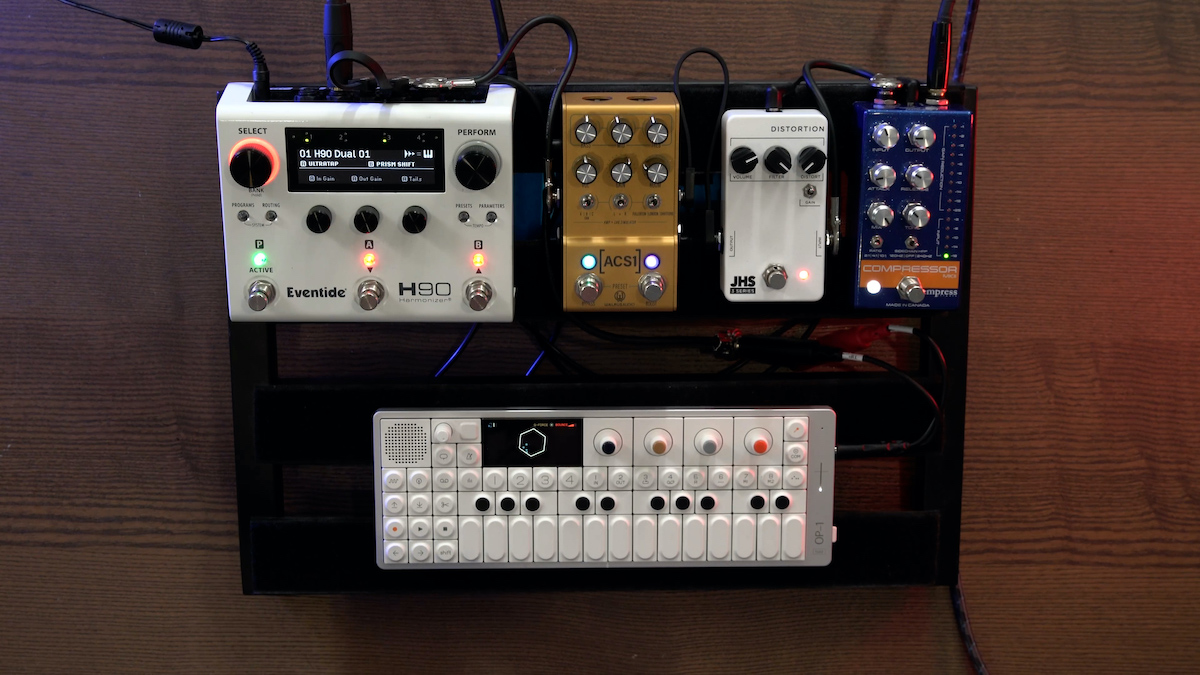
Despite the name, harmonies aren't all the H90 has to offer, because Eventide's renowned effects algorithms cover delays, reverbs, distortions, pitch effects, and more—sometimes even multiple effects per algorithm! And best of all, the H90 is the most powerful Eventide pedal to date as it is capable of running two algorithms at once, with seamless effects spillover between programs and abundant opportunities for control and signal routing.
The H90 Harmonizer includes all 52 algorithms from Eventide's previous multi-algorithm pedal, the H9. But in addition to sprucing up old favorites, there are also ten brand new algorithms that take advantage of the enhanced processing power that this pedal has to offer. Notably, Eventide's new SIFT technology allows for incredible pitch shifting effects which track polyphony marvelously. You'll find this tech put to great use in algorithms like Polyphony and Prism Shift, but there are also new implementations of classic Eventide effects like Instant Phaser, Instant Flanger, and SP2016 Reverb.
With the ability to run two algorithms at once, you might crave flexibility in how they're arranged. Thankfully, H90 offers numerous routing options, as well as additional audio I/O channels that can be used as insert loops. Alternatively, turn on Dual mode in the system settings and all four audio channels may be used as two separate stereo audio paths, with algorithms operating on one or both paths in series or parallel configurations. Plug in up to two expression pedals or auxiliary footswitches, and grab your favorite MIDI controller to meticulously map and modulate your effects.
Just as the H9 was updated and enhanced over the years, Eventide promises that there's more in store for the H90 on the horizon. Whether you're updating a pedalboard or want a dedicated outboard box with pristine effects, H90 won't let you down.
Great Gear for a Great Year
So, that's a small sampling of the rad stuff that came along in 2022—some of the pieces of electronic music and video equipment that got our own creative gears turning. From Eurorack modules to standalone effects and video synthesis gear, there was a lot to love in 2022.
Of course, don't take our word for it alone! We also recently asked a lot of our friends and favorite artists to list their favorite gear they acquired 2022, ranging from hot new releases to old standbys—so if you want a taste of what other awesome things came along this year, be sure to check out 2022's Artist Picks. You never know...you might find something that you'd missed!

